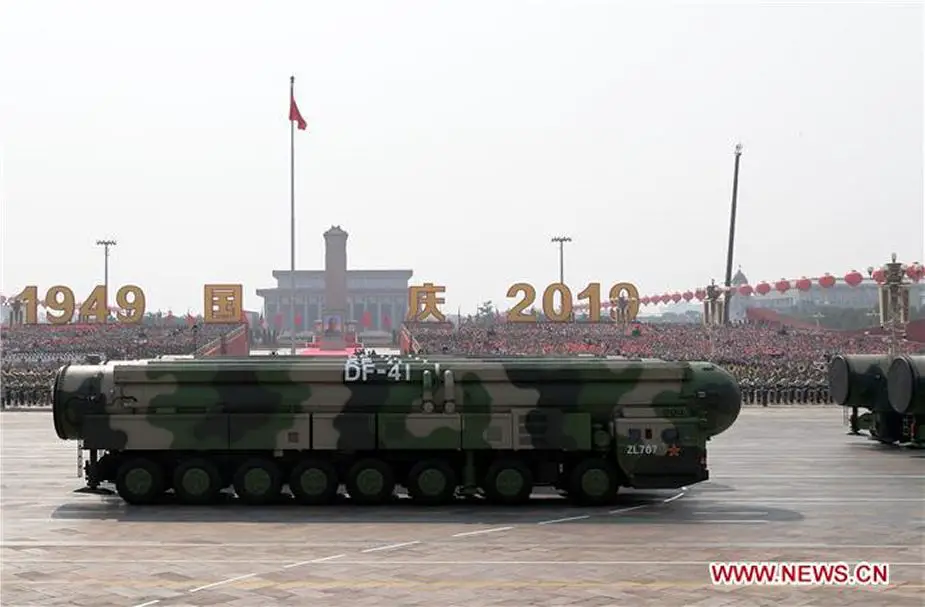Breaking news
China unveils new DF-41 ICBM InterContinental Ballistic Missile at military parade.
New Chinese-made DF-41 ICBM (InterContinental Ballistic Missile) unveiled for the first time to the public during the Chinese military parade which was held in Beijing on October 1, 2019, to mark the 70th anniversary of the founding of the People's Republic.

New Chinese-made DF-41 ICBM InterContinental Ballistic Missile at military parade in Beijing, October 1, 2019. (Picture source www.news.cn)
The DF-41 seems to be similar to Russian-made Topol-M ICBM, with the NATO code name SS-27. In August 2012, Janes defense magazine announced that the 2nd Artillery Corps of Chinese strategic nuclear missile force has test-launched the missile.
According to Internet sources, the DF-41 is currently the most powerful Intercontinental Ballistic Missile (ICBM), developed in China. The system is based on an 8-axle launcher vehicle Tian HTF5980 very similar to the Russian ICBM Topol-M. The DF-41 was test-launched for the first time in 2013.
The Df-41 would have a firing range from 12,000 to 15,000 km able to target the United States. The DF-41 uses a three-stage solid-fuel rocket engine and can carry a load up to 2,500 kg including 10 to 12 independently targetable warheads.
The DF-41 uses an inertial navigation system with the COMPASS Chinese satellite navigation system. An inertial navigation system (INS) is a navigation aid that uses a computer, motion sensors (accelerometers) and rotation sensors (gyroscopes) to continuously calculate via dead reckoning the position, orientation, and velocity (direction and speed of movement) of a moving object without the need for external references.
The DF-41 missile has a length of 16.5 meters with a diameter of 2.78 meters. It can be launched from road- and rail-mobile launcher platforms, as well as silo-based launchers.
In January 2017, the Chinese newspaper website Global Time has announced that the DF-41 was now in service with Chinese armed forces and deployed near the China-Russia border.


























